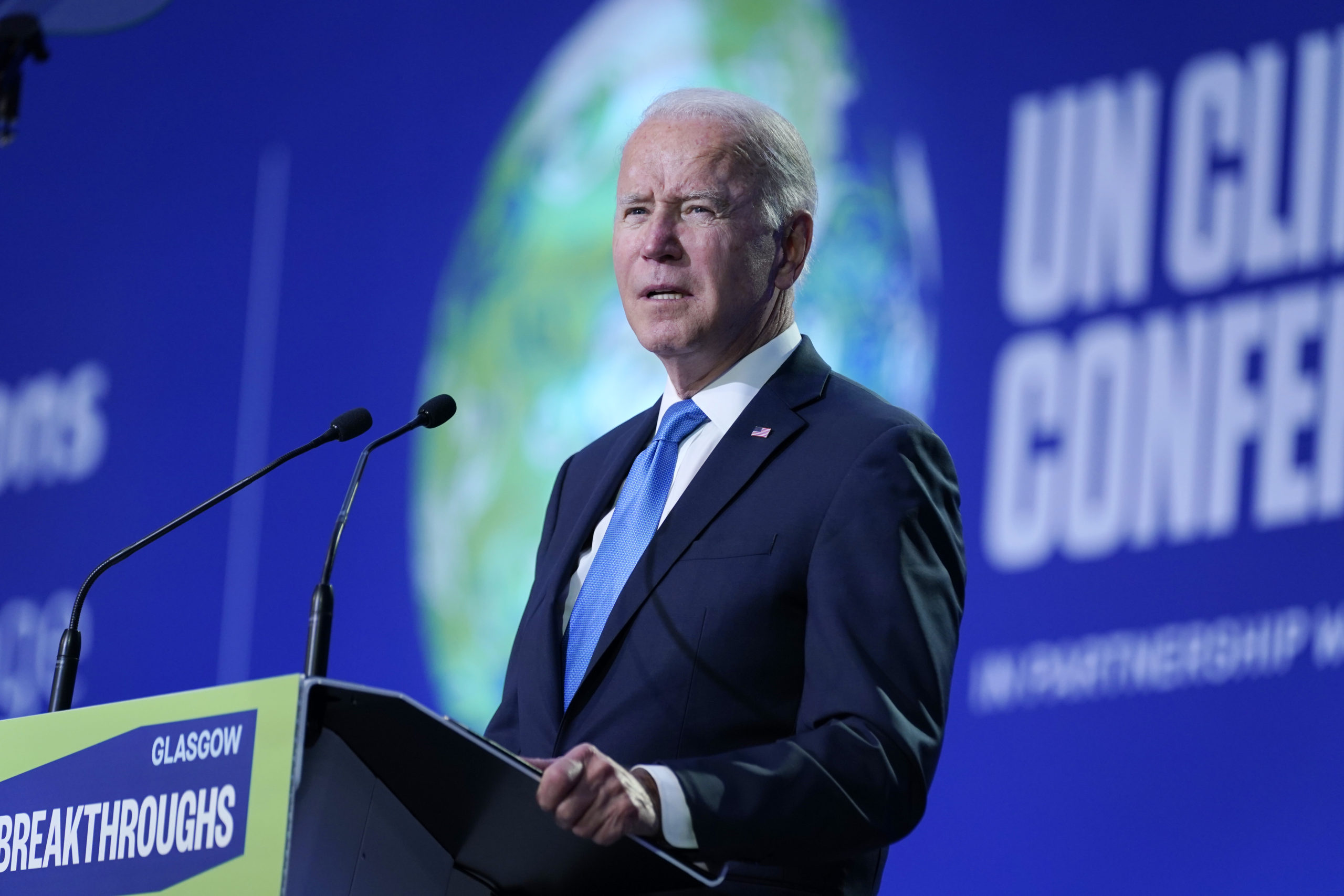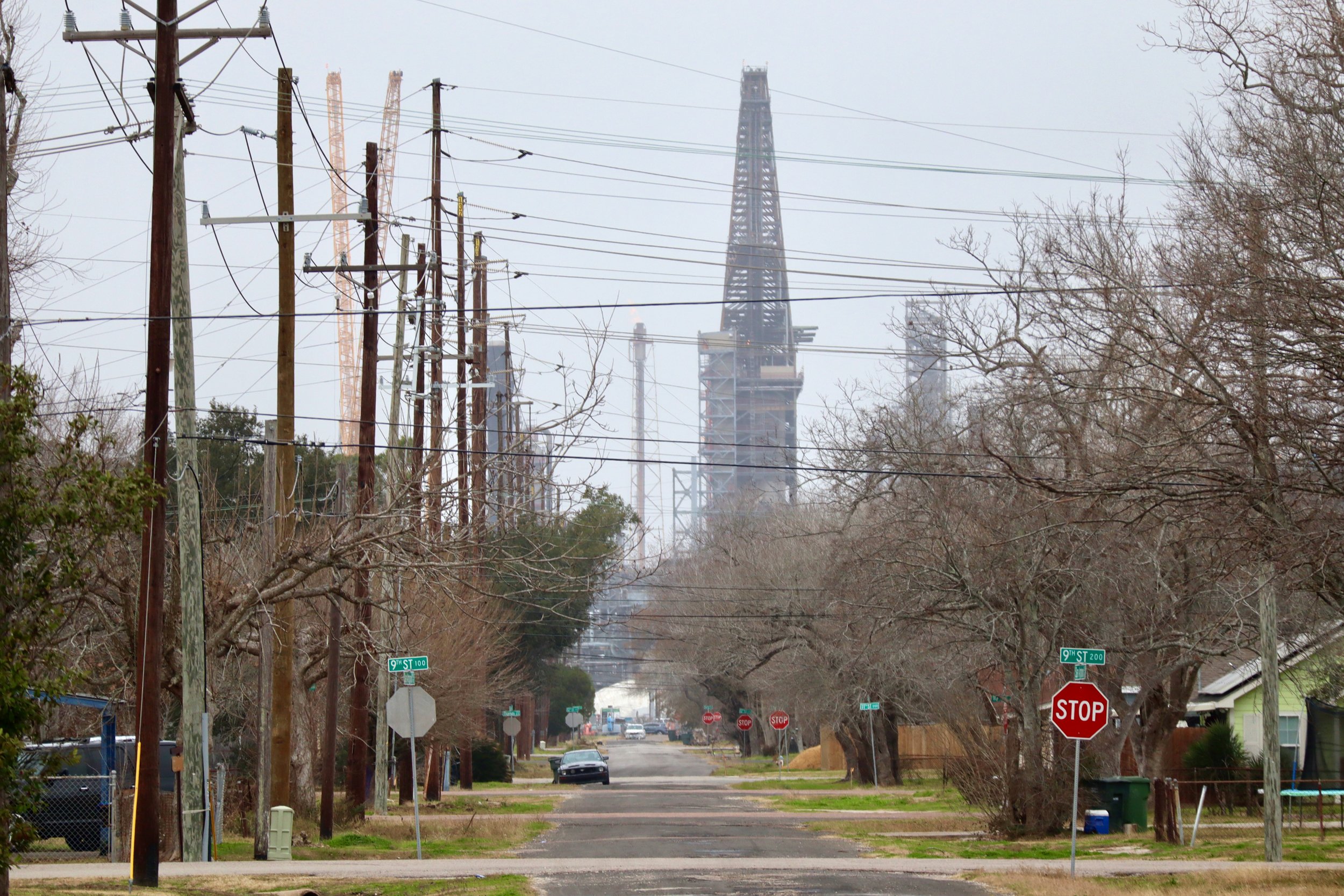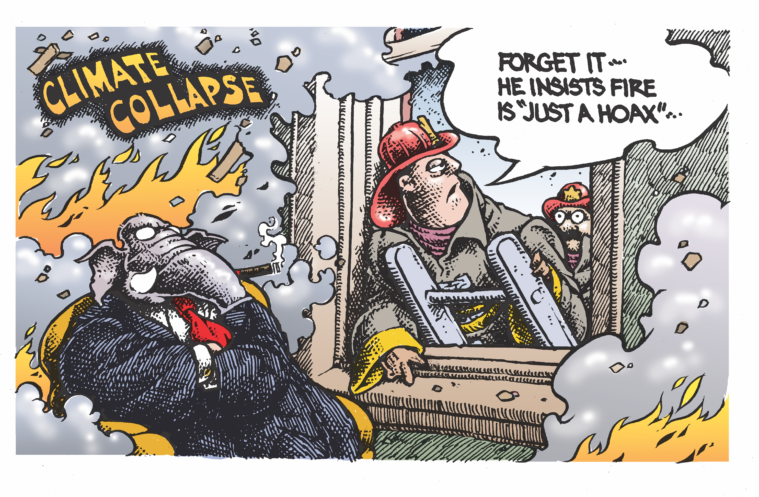
Advocates Want Biden’s Methane Rules to Go Even Further
In the nation’s largest oil and gas producing state, new federal methane emissions are only the first step in tackling climate change.

West Texas has a gas problem. This arid stretch of scrubland, from Big Spring west to New Mexico, is the country’s most productive region for producing oil and gas. It also carries the dubious distinction of producing massive volumes of methane, a heat-trapping gas that’s nearly 80 times more potent than carbon dioxide and has been linked to more than 1 million premature deaths annually in the form of ozone pollution. Texas officials have done little to correct the problem, so for years, environmental advocates have been pressuring the federal government to enact stricter regulations on methane emissions. They finally saw some results this month at a global climate change conference, though some of their more substantive priorities were left blowing in the wind.
On November 2, at the annual climate change conference called COP26, President Joe Biden pledged to reduce the United States’ methane emissions by 30 percent from 2020 levels over the next decade. In order to hit the target, the Environmental Protection Agency is expected to enact new rules to monitor and reduce emissions from the oil and gas industry, which is the nation’s largest source of methane. The EPA’s rules were also announced at COP26.
The rules will require more frequent monitoring at more than 300,000 wells across the nation; states will have to adopt a quarterly leak detection and repair program for new and existing wells, and it would also require stricter standards around venting, where excess gas produced from an oil well is released directly into the atmosphere.
“Overall, this is the culmination of a lot of work done by stakeholders to get comprehensive methane regulations for new and existing [wells],” says Colin Leyden, the Texas political director for the Environmental Defense Fund. It’s significant that the EPA isn’t distinguishing between newly drilled wells and existing wells when it comes to emissions: New wells aren’t responsible for the bulk of methane emissions, Leyden says. “This is finally addressing existing sources, and that’s a big deal.” Under the Trump administration, the federal government had suspended its existing—and far weaker—methane rules, which only applied to new wells.
But the EPA’s new rules have one major blind spot: They don’t fully address the problem of flaring, which burns off enough gas to power 5 million homes a year in the United States.The practice, where drillers burn off excess natural gas onsite, is sometimes a safety measure to regulate pressure at power plants where the gas is eventually piped to be converted into electricity. But in Texas, routine flaring has been described by oil companies themselves as the “black eye of the Permian”—a pollution problem so bad that it’s led international investors to drop deals with companies for fear of a bad reputation around sustainability. Instead of paying for equipment to capture, transport or store the excess natural gas, companies often seek out the cheapest alternative: Simply burn it off into the atmosphere. In fact, Texas’ enforcement around flaring is so lax that some companies don’t even bother to acquire permits from the Railroad Commission. A report from the environmental watchdog group Earthworks found that two-thirds of flares in the state are unpermitted.
While the proposed EPA rules aim to tackle the problem of venting, they don’t apply the same scrutiny to flaring natural gas. Even once the rules take effect, producers will still be allowed to light flares.
“There are good things in the rules about making sure that flares stay lit,” Leyden says– that means that the gas burns completely and reduces emissions. But as far as an overall rule, the EPA has left that discussion for the future. In the meantime, while the EPA rules state that venting, where operators simply allow excess gas to escape unburned into the atmosphere, will be phased out, operators can still choose to flare instead.
And it’s still an open question as to whether Texas will follow the federal regulations. During the Obama administration, the state of Texas sued the EPA dozens of times over clean air and water regulations. “We wouldn’t be surprised if the Abbot administration wants to go to court,” says Cyrus Reed, the Sierra Club’s Texas conservation director.
Meanwhile, the Texas Commission on Environmental Quality, which regulates air quality and emissions and is the state arm of the EPA, has historically relied on industry to self-report violations. Even when air quality violations occur, the agency almost always allows companies to use a legal loophole to avoid penalties. In a statement, a spokesman for TCEQ said, “The agency is reviewing the [new EPA] rule, its impact on state programs, and its compliance with basic principles of cooperative federalism outlined in the Clean Air Act.”
Some environmental advocates also see the new EPA rules as a way to treat the symptoms of climate change instead of the problem. “The biggest flaw is that the rules don’t reduce oil and gas production,” says Miguel Escoto, who has been tracking methane emissions at Earthworks for more than a year. Oil and gas is still going to be produced in the Permian, producing methane, and the extracted fossil fuels extracted from the ground will eventually be burned for power, emitting even more carbon emissions in the future. Scientists estimate that in order to stop the worst impacts of climate change in the future, nearly 60 percent of the oil and gas in the ground has to remain there.
Nonetheless, the Biden administration’s pledge to curb methane emissions does illustrate Biden’s willingness to make good on his promises to act on climate policy. For decades, oil and gas companies in the Permian and elsewhere have acted as if they have free reign, Escoto says—especially during the Trump administration. “The takeaway message for me is that our pressure, and our movement, will have influence,” Escoto says. “The war is just getting started, and we have a long way to go.”



